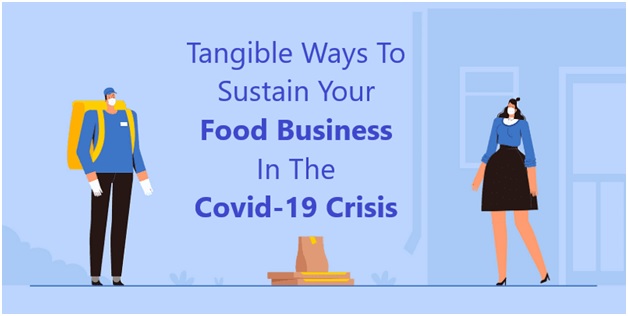The pandemic’s sudden onset has shaken all of us, causing a significant alteration in our social lives. Visiting restaurants and cafes is a social activity that we have been practicing for long. Food blogging is an example of that. Food bloggers have four times the followers than bloggers of any industry. Many food bloggers went on a pause from the start of this year. Online food ordering systems have helped rebuttal this situation. An ordering system for restaurants has existed for long, and they seem to have spiked multifold with the advent of online food delivery apps, and they are in colossal use, especially at this time. 60% of the restaurants state that offering delivery services have increased their sales. 59% of the restaurant orders from the millennial generation is either a delivery service or take out.


Cessation of the dine-in services
Dine has been cut to half, and in most restaurants, there is no dine-in service at all. Remember the time when we used to wait at the restaurants to get a table? It seems like something which happened years before. The one bonus that we have in this situation is that experts state that the Coronavirus does not spread through food.
Hence there is no ban on running the restaurant in general, and only the dine-in service is under restriction. Statistics show that 60% of people in the US, order food or take away at least once a week.
Mobile food delivery apps
Food ordering app development is being obsessively sought after by all entrepreneurs, right from a small start-up to prominent tycoons. The Mobile Ordering apps sector is expected to become a $38 billion industry by the end of 2020. Food ordering apps provide a more manageable way of running the food delivery business. It is also more comfortable for the users to order whatever they want from wherever they like. It does a great job of helping the delivery executives deliver the food at the customer’s place with the in-app GPS features.
In developing an app, most of them seek out clone apps of successful food delivery applications. These clone apps are tactfully rich in features and offer a smooth functioning. They are also affordable compared to building a new app. The time involved and the strenuous efforts needed to develop a new app is avoided when using a food delivery clone app for your business.
Although, it is essential to keep in mind that you need to get your clone app developed from the trustable and renowned app developers in the market. Your food delivery clone app should have an attractive and feature-rich UI for the ease of customer usage. The app must be white-labeled and scalable to upgrade it along with the market trends.
Assorted needs and services in the app
The Restaurant food ordering system at the dine-in place has a person catering to our needs vivaciously. We get information on what is available and what is not from the waitress/waiter present at the restaurant. It is exhausting for the customer to search for what they want through the app in food delivery apps.
The restaurants and the food items can be assorted according to their categories like,
Food discovery title
Customers can search based on the food discovery titles given like Superfast delivery, Offers near you, Vegetarian only, Pocket-friendly, Trending now, What’s new, and many more. This helps the customer to place orders based on their preference for the time being.
Time-based meal
Since there is a curfew on the operation of the food delivery apps in most places, it is smart to categorize the food on a time-based meal. Timely meals like breakfast, lunch, snack, and dinner can be presented readily on the customer’s front page of the app, depending on the time.
Multiple order
Customers should be allowed to place multiple orders from different restaurants at once. This feature is a brownie for those houses where people can never come to a common conclusion on what to eat.
Customized delivery
Customers can update and save more than one delivery location in their app by which they can get their food delivered efficiently wherever they want. The standard delivery locations that are saved are home, workplace, and friend’s place.
Logistics support
- The vital entity that needs to be considered in a food delivery service is logistics support. The delivery executives do a great deal of work picking up and delivering the food to the customers. Customers prefer to get their food delivered on time and consume it freshly cooked and hot.
- A survey shows that 33% of the consumers were willing to pay a higher fee for faster delivery service. Employing an efficient team of delivery executives is essential to run the food delivery business.
Precautions for COVID-19
Even though many businesses are running despite the pandemic situation and uncertainties, they need to ensure safety and hygiene standards. Few strategies that can be followed to ensure safety are,
- Cashless payment and encouraging payment by digital transactions.
- Contactless delivery and encouraging the delivery executive to drop off the order at the doorsteps.
- Self-screening of the delivery executives and the restaurant staff for masks and gloves.
Revenue model
The revenue model of the food delivery apps is majorly based on the commission per order. Other models like delivery surge fees and in-app advertisements are also a way to gain consistent income.
The commission charge per order might range somewhere between 15-30%. Since most of the restaurants face a crisis like any other business, and with food delivery apps seeing a spike in their usage than regular times, it would be considerate to set a nominal commission charge on every delivery order.
Now, we can see food bloggers post reviews about the takeaway and order food in their blogs.
Food delivery services through mobile apps are expected to rule the market even after the pandemic. As humans, we have always tended to accommodate ourselves to the on-going changes. As we adapt ourselves according to the changing standards along, so should our food businesses.









